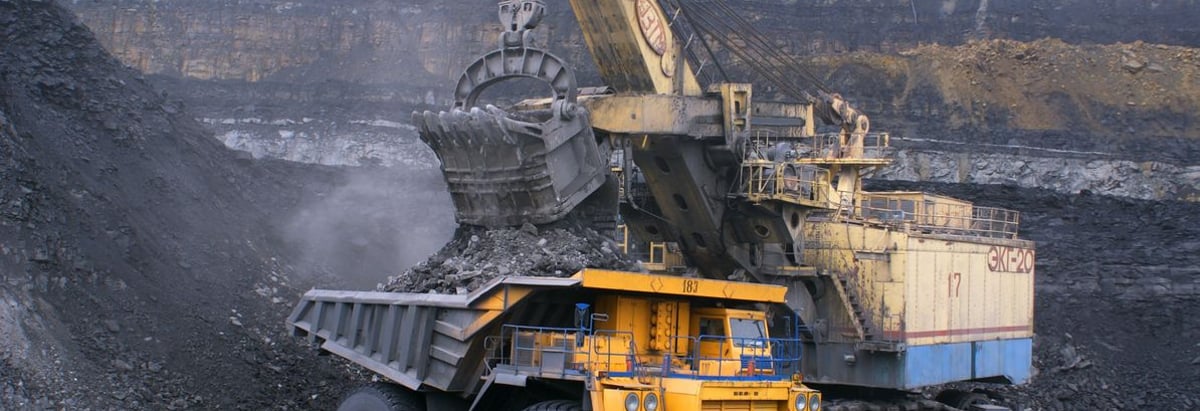
Today we'll evaluate Ur-Energy Inc. (TSE:URE) to determine whether it could have potential as an investment idea. In particular, we'll consider its Return On Capital Employed (ROCE), as that can give us insight into how profitably the company is able to employ capital in its business.
First, we'll go over how we calculate ROCE. Then we'll compare its ROCE to similar companies. Finally, we'll look at how its current liabilities affect its ROCE.
Understanding Return On Capital Employed (ROCE)
ROCE is a measure of a company's yearly pre-tax profit (its return), relative to the capital employed in the business. Generally speaking a higher ROCE is better. In brief, it is a useful tool, but it is not without drawbacks. Renowned investment researcher Michael Mauboussin has suggested that a high ROCE can indicate that 'one dollar invested in the company generates value of more than one dollar'.
So, How Do We Calculate ROCE?
The formula for calculating the return on capital employed is:
Return on Capital Employed = Earnings Before Interest and Tax (EBIT) ÷ (Total Assets - Current Liabilities)
Or for Ur-Energy:
0.014 = US$1.3m ÷ (US$100m - US$7.5m) (Based on the trailing twelve months to December 2018.)
Therefore, Ur-Energy has an ROCE of 1.4%.
View our latest analysis for Ur-Energy
Does Ur-Energy Have A Good ROCE?
One way to assess ROCE is to compare similar companies. In this analysis, Ur-Energy's ROCE appears meaningfully below the 5.5% average reported by the Oil and Gas industry. This could be seen as a negative, as it suggests some competitors may be employing their capital more efficiently. Regardless of how Ur-Energy stacks up against its industry, its ROCE in absolute terms is quite low (especially compared to a bank account). There are potentially more appealing investments elsewhere.
Ur-Energy delivered an ROCE of 1.4%, which is better than 3 years ago, as was making losses back then. This makes us wonder if the company is improving.

When considering this metric, keep in mind that it is backwards looking, and not necessarily predictive. Companies in cyclical industries can be difficult to understand using ROCE, as returns typically look high during boom times, and low during busts. This is because ROCE only looks at one year, instead of considering returns across a whole cycle. We note Ur-Energy could be considered a cyclical business. What happens in the future is pretty important for investors, so we have prepared a freereport on analyst forecasts for Ur-Energy.
What Are Current Liabilities, And How Do They Affect Ur-Energy's ROCE?
Liabilities, such as supplier bills and bank overdrafts, are referred to as current liabilities if they need to be paid within 12 months. Due to the way ROCE is calculated, a high level of current liabilities makes a company look as though it has less capital employed, and thus can (sometimes unfairly) boost the ROCE. To counter this, investors can check if a company has high current liabilities relative to total assets.
Ur-Energy has total assets of US$100m and current liabilities of US$7.5m. Therefore its current liabilities are equivalent to approximately 7.5% of its total assets. With barely any current liabilities, there is minimal impact on Ur-Energy's admittedly low ROCE.
The Bottom Line On Ur-Energy's ROCE
Still, investors could probably find more attractive prospects with better performance out there. Of course, you might find a fantastic investment by looking at a few good candidates. So take a peek at this freelist of companies with modest (or no) debt, trading on a P/E below 20.
For those who like to find winning investments this freelist of growing companies with recent insider purchasing, could be just the ticket.
We aim to bring you long-term focused research analysis driven by fundamental data. Note that our analysis may not factor in the latest price-sensitive company announcements or qualitative material.
If you spot an error that warrants correction, please contact the editor at editorial-team@simplywallst.com. This article by Simply Wall St is general in nature. It does not constitute a recommendation to buy or sell any stock, and does not take account of your objectives, or your financial situation. Simply Wall St has no position in the stocks mentioned. Thank you for reading.
About TSX:URE
Ur-Energy
Engages in the acquisition, exploration, development, and operation of uranium mineral properties in the United States.
Excellent balance sheet and fair value.
Similar Companies
Market Insights
Community Narratives





